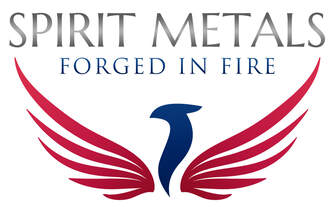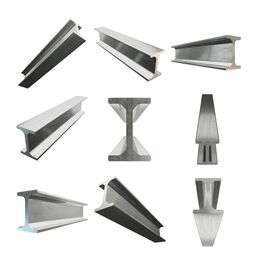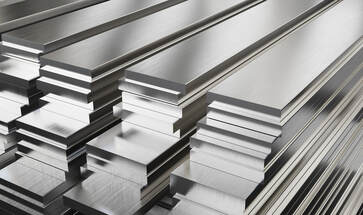 Do you know the history of Labor Day? Each year in the United States, the first Monday of September, we celebrate Labor Day! But how many of us understand the reason why or its importance? Most of us welcome the opportunity to sleep in an extra day. Or spend time with family and friends having barbeques, outdoor picnics, fireworks, and other activities to celebrate this national holiday. It is our annual celebration of the contributions of workers and the achievements made throughout history. But there is more to the story! The Legacy In the late 19th century of this country, as our nation was at the height of the Industrial Revolution, workers in America worked on average 12 hours a day and worked all seven days of the week. Ouch! But back then it was a necessity to make a basic living. While some states had restrictions on child labor, it did little to prohibit children as young as five or six from working in factories, mills, and mines throughout the country. To make matters worse, these children earned but a fraction of their adult counterparts. Immigrants and the very poor faced conditions that by today’s standards would have all of us seeking legal counsel. They met such things as unsanitary conditions, poor air quality (or access to fresh air, as in the mines) and, well breaks were just non-existent. The more industrialized we became, agriculture no longer was the leading source for income, and labor unions became more vocal and subsequently more active. They began organizing themselves. By exercising their right to free speech, protests were an outcry to the deplorable conditions in which they worked, day in and day out, as well as a venue in which to negotiate better pay and hours. These were not like the peaceful protests of the 60’s when peace and love were the mantras of the masses. They often became violent, like the Haymarket Riot of 1886 where several people, including police officers, were killed. However, while many chose to riot, others took to a tradition. In New York City, the first Labor Day parade was held on September 5th, 1882. At least ten thousand workers, using unpaid time from work, marched from City Hall to Union Square. Known as the “Working Man’s Holiday” other industrial areas throughout the country followed suit. While some states passed the legislation recognizing Labor Day on the first Monday in September, it would not become a recognized holiday until 12 years later, voted by Congress, in 1894. To learn more about Labor Day and the history of the men, women, and children that sacrificed their lives and health in the early years of our nation’s history, visit https://www.history.com/topics/holidays/labor-day-1. So today, as you celebrate with families, friends, and co-workers over hotdogs and burgers or celebrate doing absolutely nothing; be mindful that those that came before us. Lift your glass of sweet tea or a nice cold one and be grateful for those who sacrificed before us. Today, our country celebrates you, the men and women of this great nation who do not just work for a paycheck but who contribute to the growth of these United States of America. And remember, regardless of whether you sweep floors or are the leader in Fortune 500 company, you make a difference. Here at Spirit Metals, we wish to thank you for your contributions, to our country. You are critical to our continued success as a nation, we value you, and we hold dear the importance of your labor. Our goal is to serve the needs of our customer's needs on every level. We believe that partnering with or customers in every way allows us all to be successful. Contact us today via email or call us at 813-444-2022 – let us quote your next project!
0 Comments
 Your project calls for beams, but you are not sure of whether to get I or H-Beams (H-beams also referred to as wide flange). Today we will discuss the differences and the telltale signs that you have an I-beam or an H-beam. Visit our site today and there are charts that help you in deciding what beam will be best for your next project! I-Beam Our customers often tell us that the beams they have seen look like an I or an H when set on its side. How can you tell if you are looking at an I-beam over an H-beam? The differences in how they look are subtle, so knowing what to look for and how you plan to use it is beneficial. Typically, I-beams are used to support trusses and in the framework of buildings. Beams, in general, are structural supports and ensure structural integrity as they provide tremendous strength. When you are looking at these two types of beams on their side, an I-beam has smaller flanges and tapered edges. An I-beam that is S8 @ 18.4# will have a depth of section that is 8 inches with a flange width of 4.001 inches with a web thickness of .271 (a little more than a ¼ of an inch). And it weighs 18.4 pounds per foot. I-Beams are limited in their available sizes, whereas the H-beam is available in hundreds of sizes. Spirit Metals offers I-beams in carbon and stainless steel, as well as aluminum and Corten. Your structural plans will call out the right beams for your project, so contact us today for a comprehensive quote. H-Beam An H-beam gets its name because over its cross-section it looks like a capital H and has a wider flange(s). Often referred to as WF or wide flange beams, H-beams are used in the bridge construction, buildings, cranes, truck trailers and in a wide variety of other applications. Like the I-beam, H-beams are measured very similarly, and it is crucial to know what your load capacity is. Knowing the depth of section and pounds per foot is an essential element when requesting a quote for any beam. Wide flange beams come in a variety of sizes, lengths, and pounds per foot. Beams are offered in A572*, A588, A709, and A992, all of which should be called out in your plan’s structural notes. The standard when ordering these WF beams will almost always be A992 *A572 is a multi-grade that covers a variety of alloys and grades H-Pile Beam H-piles are used in bridge construction, heavy highway repair and builds, marine, and other deep foundation applications. These beams are dimensionally square and add support and stiffness to sheet pile walls and foundations. If you are looking for H-pile, I or H beams, be assured Spirit Metals has what you are looking for! Beams are an essential part of how we build. Whether you are making a crane hoist or constructing a building, Spirit Metals can help! Our primary goal is to understand the needs of your business, project, and budget; to partner with you to achieve those goals. Call us today at 813-444-2022 or email, and one of our dedicated team members will assist you!  If your next project calls for stainless steel, it is essential to know the differences between 304/304L and 316/316L and why you may need one over the other. There is a myriad of stainless steel alloys to choose from, but these two are the most widely used. Stainless Steel Stainless Steel is a widely used and recognized product. You may have SS appliances throughout your home. Your BBQ grill may be a combination of stainless and carbon steel materials. Perhaps you have SS jewelry. The applications for stainless steel are endless, and understanding the difference between the most commonly used 304 and 316 stainless will guide you in your next project. Many people ask, do you carry stainless steel structural materials? Are all the same materials like square tubing, beams, angles, etc. available too? Yes, Spirit Metals offers carbon and stainless steel products in the specific alloys you need for your project. We provide creative solutions when you are looking for something that is not standard, allowing you to complete your project to spec. Stainless Steel 304/304L 304 and 304L are nearly identical in their composition. However, there is one key difference between the two. 304 Stainless steel has a maximum carbon content of 0.08% and has more chromium. However, your plans may call for 304L and so it is crucial to understand why your customer is asking for it. 304L is a variation of 304, with a maximum carbon content of 0.03% which aids in the elimination of carbide precipitation that occurs during welding. So if your plans or your customer specifically ask for 304L, it is likely that they are going to be welding the material and therefore want the least amount of toxicity that occurs during the welding process. But there could be any number of reasons beyond that, so just understanding that there is a difference matters most. Stainless Steel 316/316L 316 and 316L have similar guidelines as 304/304L. In 316 stainless steel, you have a mid-range of carbon content, and 316L has the same .03% as 304L, that is ideal for welding applications. But there is a distinct difference between 304 and 316. While both alloys have excellent corrosion resistance, you want to be wary of using 304/304L in a marine or salt air environment. 316/316L has a higher nickel content which helps fight off corrosion. This alloy is ideal in and around a marina and areas with salt air. Here in Florida, boat owners, marinas, and homes close to the coastline use 316/316L this over 304/304L for longevity. The life span of stainless steel over standard or galvanized steel is significant because of the metallurgical composition. Standard carbon steel, untreated is prone to pitting at a much faster rate than stainless steel. That is not to say pitting won’t occur over a long period; and factors such as the grade of steel, environment, and surface finish will impact durability. Regardless of your needs, Spirit Metals is prepared to provide you a comprehensive quote to your specific needs. Our primary goal is to understand the needs of your business, your project, and your budget, and partner with you to achieve those goals. Call us today at 813-444-2022 or email, and one of our dedicated team members will assist you! |
AuthorWrite something about yourself. No need to be fancy, just an overview. Archives
September 2019
Categories |
|
